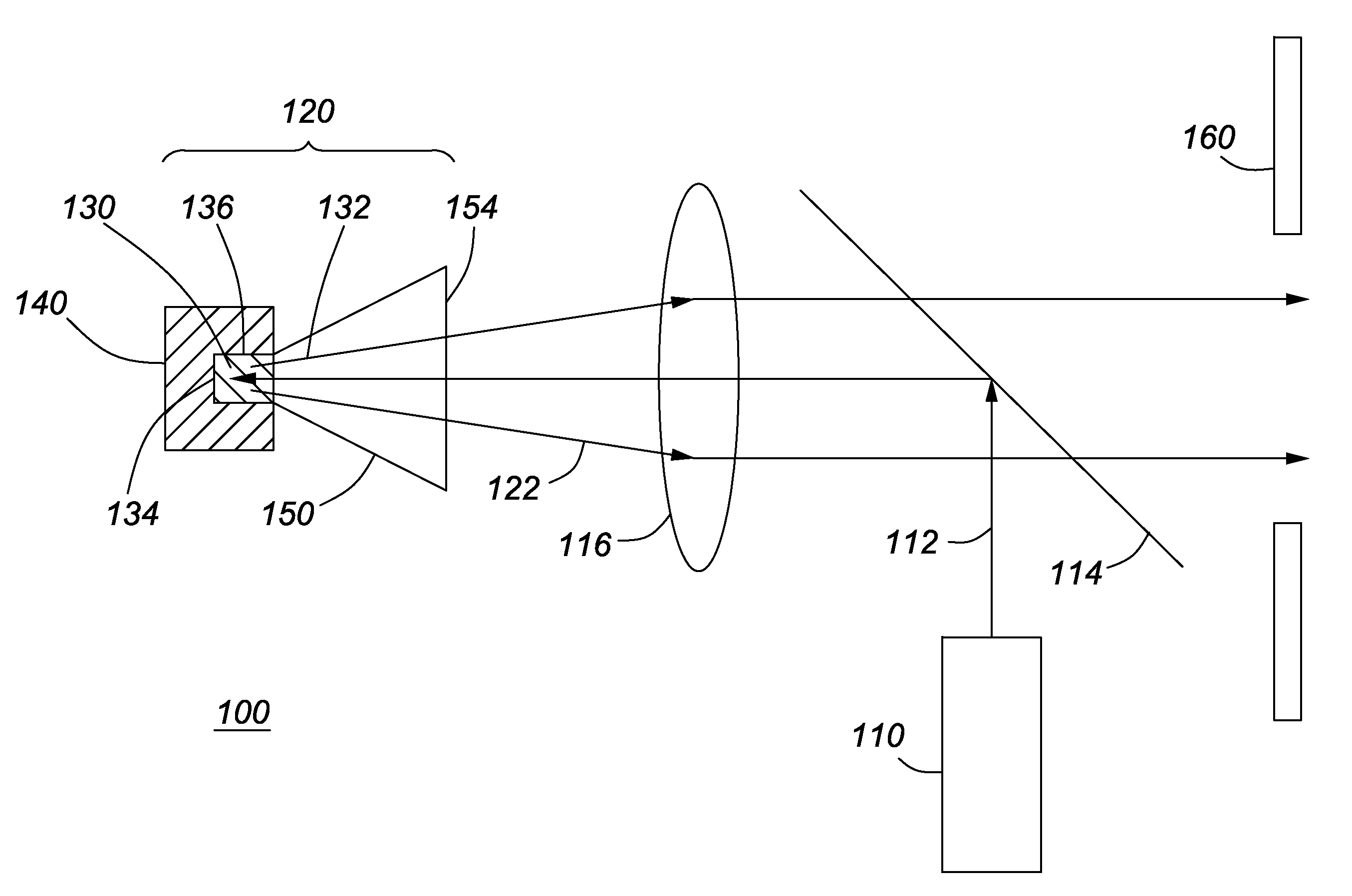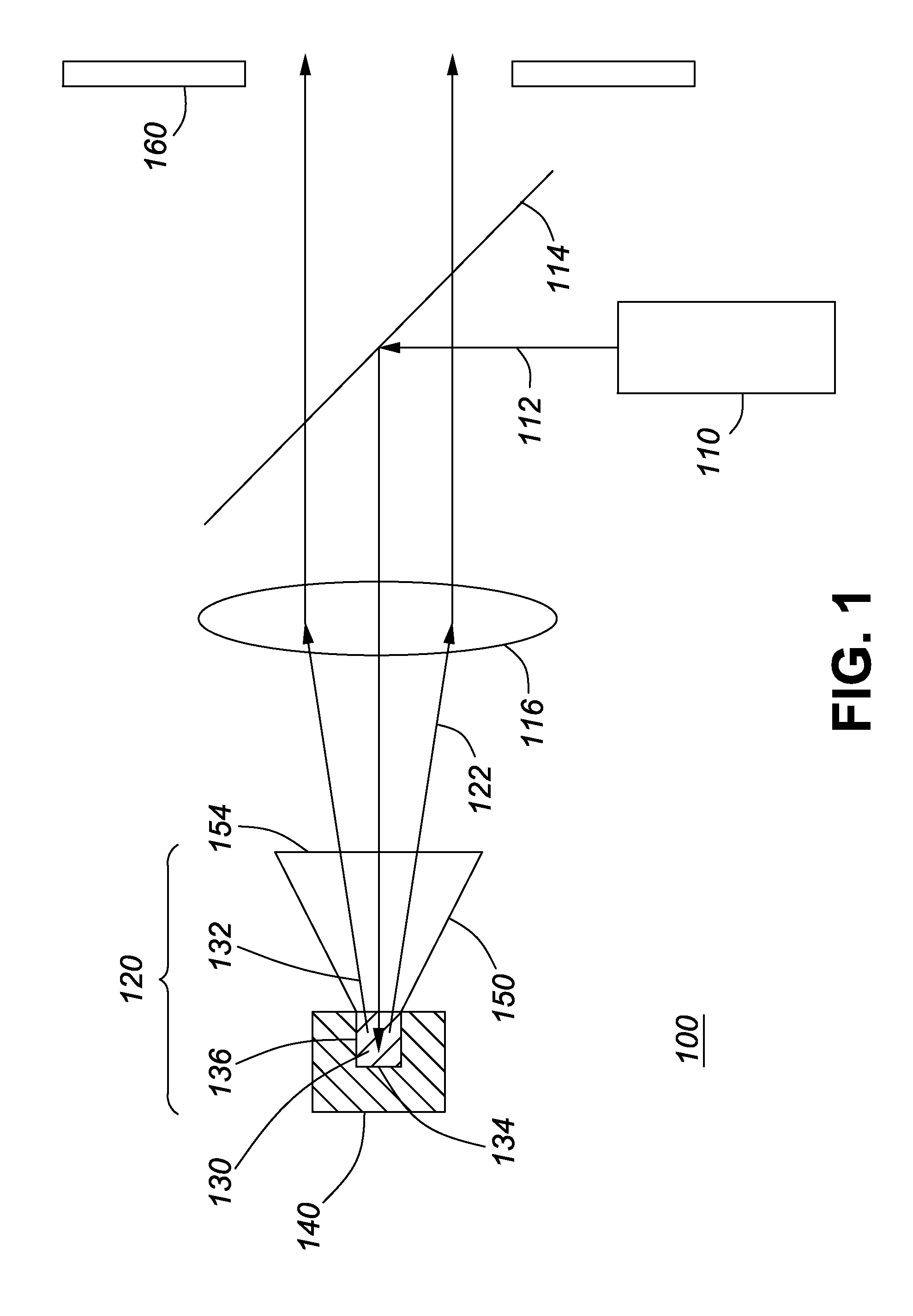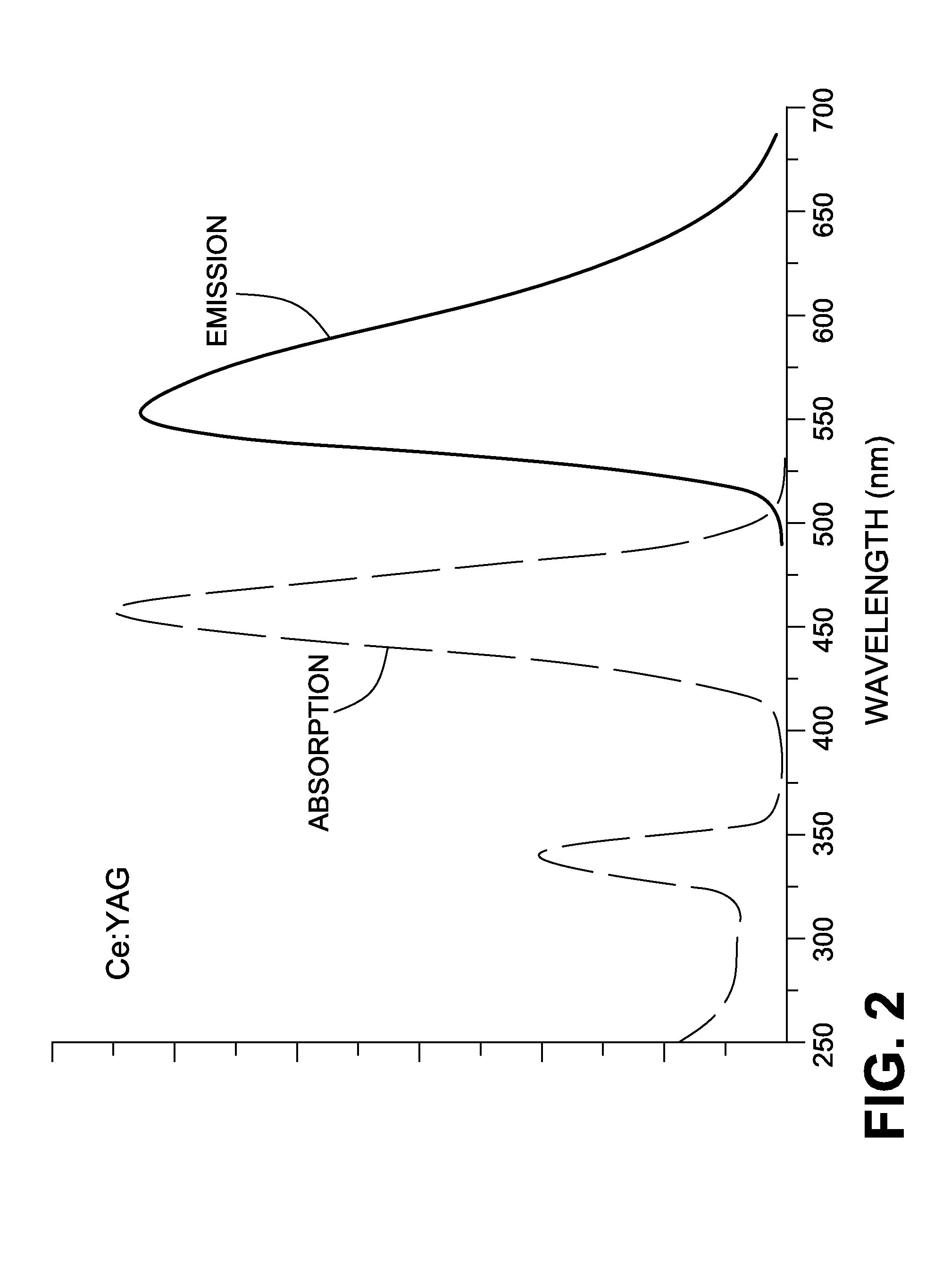High brightness illumination system and wavelength conversion module for microscopy and other applications
a technology of illumination system and wavelength conversion module, which is applied in the direction of optics, lighting and heating equipment, instruments, etc., can solve the problems of short life, environmental hazards, and temporal variation of output power
- Summary
- Abstract
- Description
- Claims
- Application Information
AI Technical Summary
Benefits of technology
Problems solved by technology
Method used
Image
Examples
first embodiment
[0046]A schematic diagram of an illumination system 100 according to the invention is shown in FIG. 1. It comprises a laser light source 110 and an optical wavelength conversion module 120, which comprises an optical element 130 mounted within a support or holder 140 of thermally conductive material, and an optical concentrator 150. The laser source 110 generates optical radiation 112 that is collimated or focused and directed towards to the optical element 120 via optical components comprising a dichroic minor 114, lens 116 and the optical concentrator 150. The laser radiation 112 enters the optical element 130 of the wavelength conversion module 120, via a surface 132 of optical element 130 that mates with the aperture 152 of optical concentrator 150. The optical element 130 comprises a wavelength conversion medium 131, i.e. a fluorescent material that absorbs optical radiation 112 from the laser source 110 and emits photoluminescence or fluorescence 122 at a different wavelength,...
second embodiment
[0071]Alternatively, a combination of shapes and materials could be used to improve optical performance over the simple cube or cylindrical rod. This could be designed so one could benefit both from cost and ease of manufacturability and acceptable optical performance. For example, in a wavelength conversion module 220 a preferred design for the shape of the body of the optical element 230 of the fluorescent material comprises a short cylindrical portion 231 that is bonded with or contiguous with a conical reflector portion 233, as shown in FIG. 9 and FIG. 10. The cylindrical portion 231 would be a selected fluorescent material e.g. Ce:YAG to provide fluorescence at the desired wavelength. The conical portion 233 could also be the same material, or would preferably be a glass material, or another material, such as sapphire or undoped YAG, that has a similar index of refraction as the fluorescent material 231 and is transparent at the wavelength of the photoluminescence. These varia...
PUM
| Property | Measurement | Unit |
|---|---|---|
| reflectance | aaaaa | aaaaa |
| diameter | aaaaa | aaaaa |
| diameter | aaaaa | aaaaa |
Abstract
Description
Claims
Application Information
 Login to View More
Login to View More - R&D
- Intellectual Property
- Life Sciences
- Materials
- Tech Scout
- Unparalleled Data Quality
- Higher Quality Content
- 60% Fewer Hallucinations
Browse by: Latest US Patents, China's latest patents, Technical Efficacy Thesaurus, Application Domain, Technology Topic, Popular Technical Reports.
© 2025 PatSnap. All rights reserved.Legal|Privacy policy|Modern Slavery Act Transparency Statement|Sitemap|About US| Contact US: help@patsnap.com



